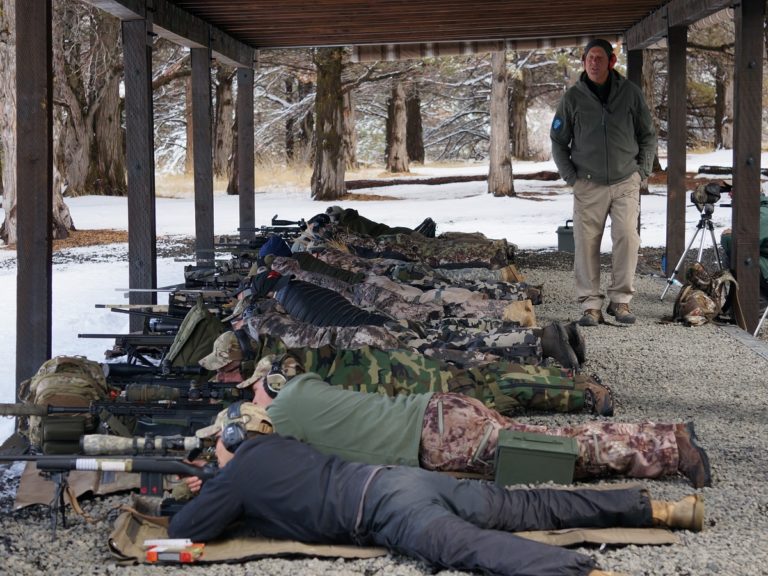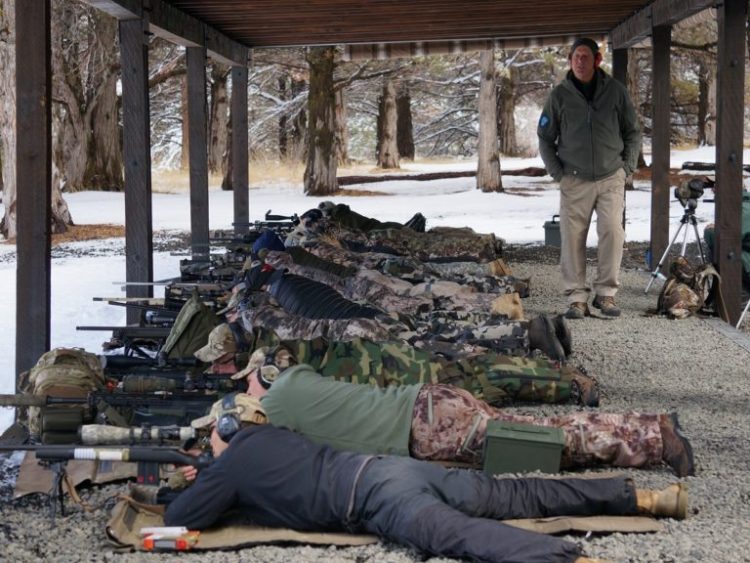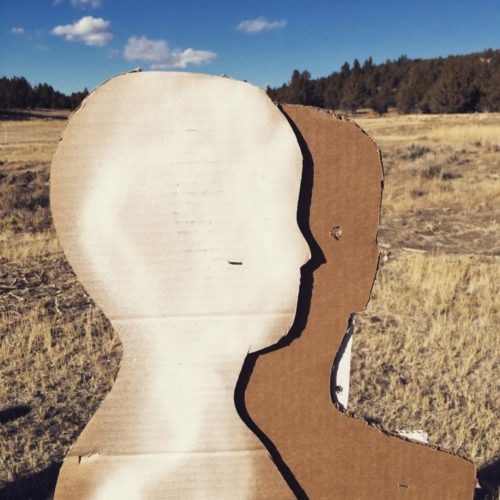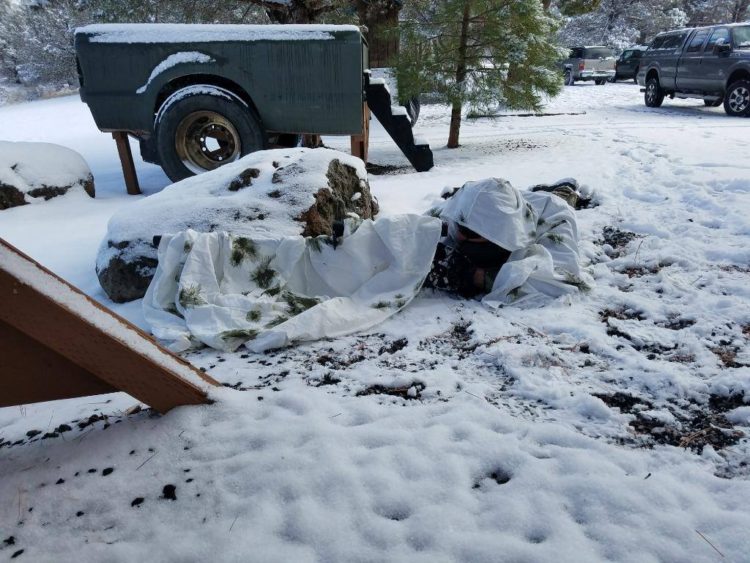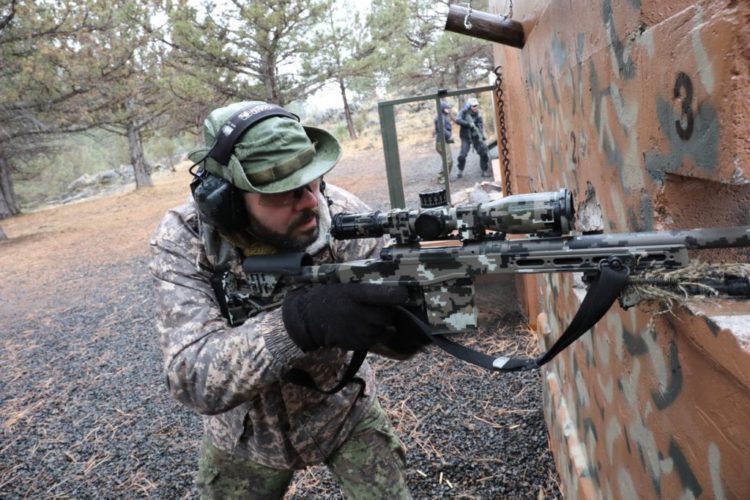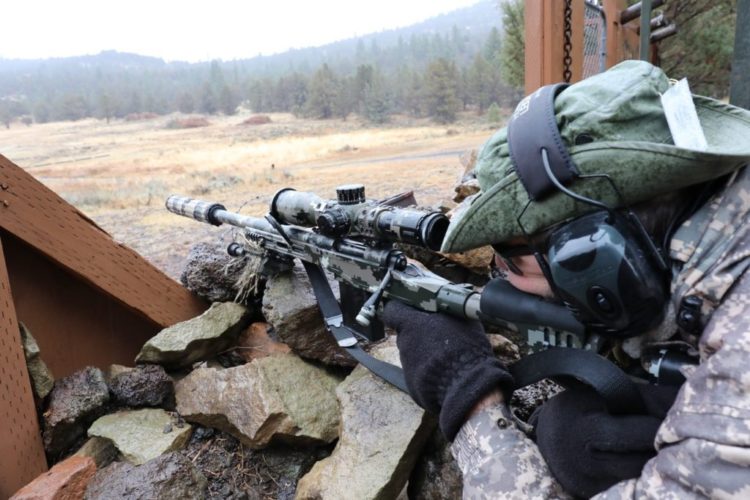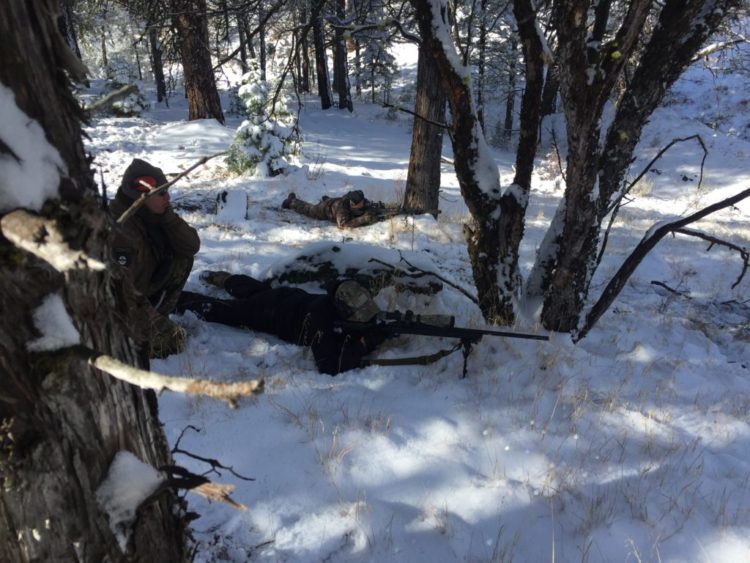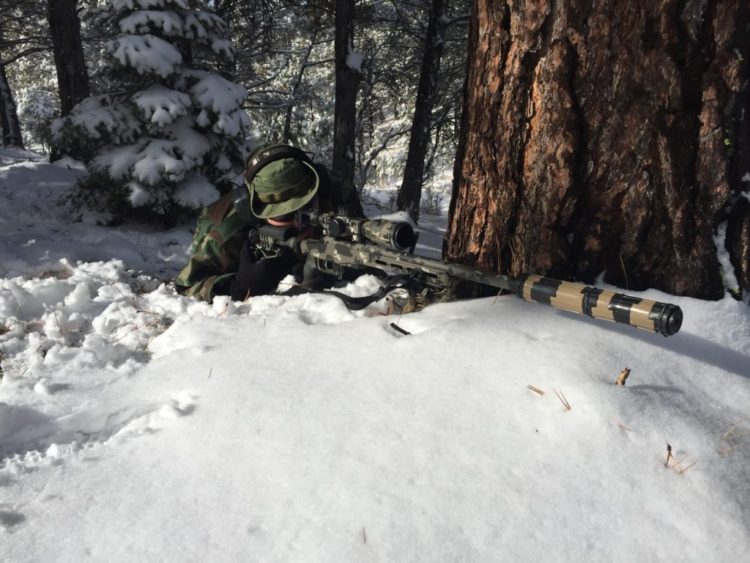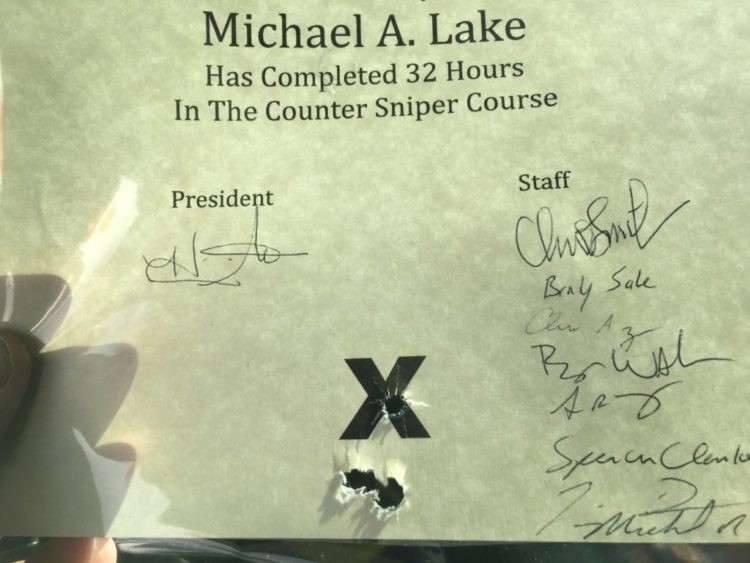Ask almost any supposedly reputable source for training on the obscure body of knowledge that includes fieldcraft, stalking, hides, camouflage, in short: “sniper skills,” and the answer is almost always the same: “…but we don’t teach that stuff to civilians.” It’s probably best if I reserve further comment on that, other than to say that, like most rarified disciplines there is obviously more talk than authentic knowledge and finding a legitimate source willing to share that knowledge with the garden-variety armed citizen can be difficult, believe me – I’ve looked.
There are, of course, good reasons to be cautious with the dissemination of this information. Let’s face it, under current societal conditions in the United States there is no definitive defensive application for long range, shoot from cover, rifle skills, and these skills in the wrong hands can be very hazardous to society. Thankfully there are a very few places where “vetted” armed citizens who are practitioners of the art can obtain qualified instruction – one of them being Thunder Ranch.
Some try to blow off such training as merely “tactical entertainment,” and to be sure there are some folks who do go to “gun camp” strictly because they find it fun, no problem. Some of us, however, take this kind of thing very seriously, devoting a great deal of our time and treasure to developing skill at arms. Maybe we do it because history constantly reminds us that civilization is a fragile thing, maybe it’s because we live in a crazy world where sick people open fire on complete strangers from towers, casinos, or vehicles. Sun Tzu admonished us that “If you know the enemy and know yourself, you need not fear the result of a hundred battles…” Where better to learn the techniques that may be used against you, as well as your own capabilities, than in intensive training? -and while it is not terribly likely that I personally will ever need to use the training I have received in real conflict, just as I hope to never need the fire extinguishers in my house or the airbags in my car, I still have them and maintain a state of readiness to use them.
Some historical accounts seem to indicate that there is a tendency for sniper skills to be lost between conflicts, resulting at times in new generations having to reinvent the wheel and start back at square one. Vietnam-era Marine Sniper Steve Suttles (who actually has an award named after him – the award that goes to the top gun of the State Department’s designated marksman course), once told me how important he thought it was to preserve this hard-won knowledge for future generations. He charged me to “pass on what I have learned.” If you had heard him, you would have known that he very sincerely meant what he said.
So, in November of 2017, I joined 13 other students in the mountains of Southern Oregon – not just for another “precision rifle class”, even though there was plenty of rifle trigger time, but specifically to learn Countersniperskills. The class was made up of current and former military, hunters, enthusiasts, and a few armed citizens like myself. 12 of us were prior Thunder Ranch students.
Class began with Clint’s lecture describing the purpose and history of the countersniper curriculum. As opposed to a traditional sniper class, countersniper training is a much-condensed format consisting of an overview of the techniques and methods employed by snipers, with the ostensible purpose of being able to avoid or neutralize them.
Following the lecture, the class hit the range to verify zeros at 100 yards, and gather DOPE (ballistics data) out to 700 yards. Rifles on the line were primarily high-end bolt guns including an AI, a Desert Tech, an RPR, the usual complement of Remington 700’s, a Knight’s SR-25, and my highly-modified Savage Model 10. This is the 6th class I have taken with this Savage and it just keeps performing. The predominant caliber was .308 Winchester, though there was also an ’06 and a pair of 6.5 Creedmoors. Optics included Leupold, Nightforce, Schmidt & Bender, Vortex, and my Minox ZP-5, 3-15X first focal plane, mil/mil. At least 2 optics had significant problems during this class, thankfully my Minox performed flawlessly.
A word to the wise: when you show up to any class, particularly a class using precision rifles, you need to run a thorough systems check on your gear first. Make sure the action is tight in the stock, the scope mount and rings are tight and firmly holding the scope, the ammunition feeds, functions, and ejects, and all of your scope adjustments are working properly.
The shooting portion of the class spent a lot of time on reticle ranging targets and compensating for distance both by dialing and holding. Targets were mostly head-and-shoulders size silhouettes, many of them camouflaged or partially obscured.
On day 2, shooting exercises included engaging moving or appearing/disappearing targets, and hostage-type targets. In addition to shooting, there were some memory and observations exercises or “Kim’s games.” (The name is sometimes used as an acronym for “Keep In Memory”, though in truth it is derived from Rudyard Kipling’s 1901 novel Kim, in which the hero plays the game during his training as a spy.) The class also received some instruction on the application of camo face paint, as well as a brief demonstration of ghillie suits before we were divided into two groups for a camouflage exercise.
The camouflage exercise was a form of hide-and-seek. The students in hiding needed to use terrain features and topography as well as natural and artificial materials to create a concealed position that allowed them sufficient view of the target area. To verify this, students had to write down what actions they observed at the target area. The position also had to be mobile, as students were required to relocate during the exercise while escaping observation. This is one of those skills that really can’t be taught, you can be given some pointers, but the only way to really learn it is to do it.
Day 3 found shooters broken up into 2-person teams at different locations around the ranch. At each position, shooters were given a limited time to find, range, and engage camouflaged and partially obscured targets at distances from 100 to over 600 yards. Some of these targets were extremely difficult to see and shooters were basically given one shot at each target – hit or miss. Partners needed to spot for each other, observing impacts to give on-the-fly wind calls and elevation adjustments. In addition to the shooting and target ID aspects, some stages required shooters to avoid silhouetting, backlighting, or otherwise revealing themselves to the target area. Urban hides and field hides were both emphasized.
Other topics covered in-between shooting stages included field gear, everything from clothing and miscellaneous field equipment to rifle support equipment. Given the wide weather swings the class experienced (from T-shirts on the first day to heavy layers of snow gear on the last), knowing how to pack for almost any weather conditions without hindering mobility wound up being a very relevant topic. When not in the rotation, shooters practiced position shooting, shooting around barricades, and the Thunder Ranch rifle obstacle course, called “The Punisher.”
Day 4 involved similar, but slightly modified field exercises with more stringent time limits, and a basic stalk to establish a firing position without exposing yourself to the target area. This necessitated students to work on partner communication and movement, as well as crawling, slithering, and maneuvering into position safely with rifles.

Every class I have taken at Thunder Ranch has been a valuable learning experience, and this one was no exception. Safety is always taken very seriously, and no matter why you are there, the staff goes out of their way to make sure you are getting what you came for. There is ample opportunity for fellowship and knowledge transfer with the diverse and knowledgeable group of instructor cadre and fellow students, the curriculum and delivery are excellent, then there is Clint and Heidi’s famous hospitality. Thunder Ranch, as a facility, is top-notch. They are continuing to innovate by expanding their range capabilities and adding equipment, buildings, obstacles, and other props to enhance the realism and challenge. I have been training with them for over a decade and they just keep getting better.
This article was reposted with the author’s permission. Read the original post here.
*The views and opinions expressed on this website are solely those of the original authors and contributors. These views and opinions do not necessarily represent those of Spotter Up Magazine, the administrative staff, and/or any/all contributors to this site.

